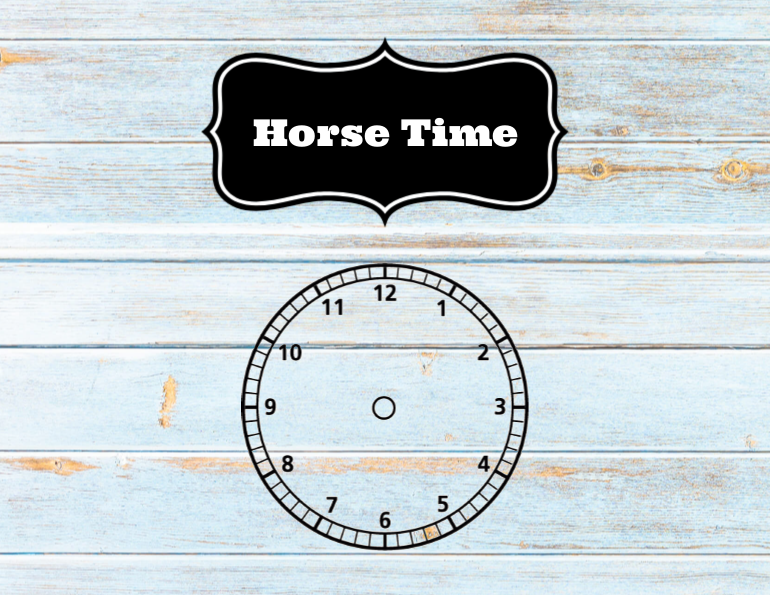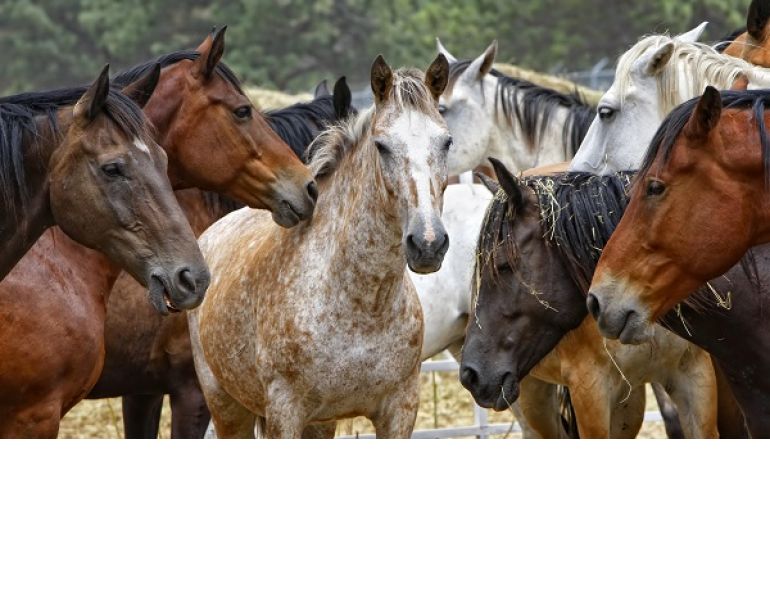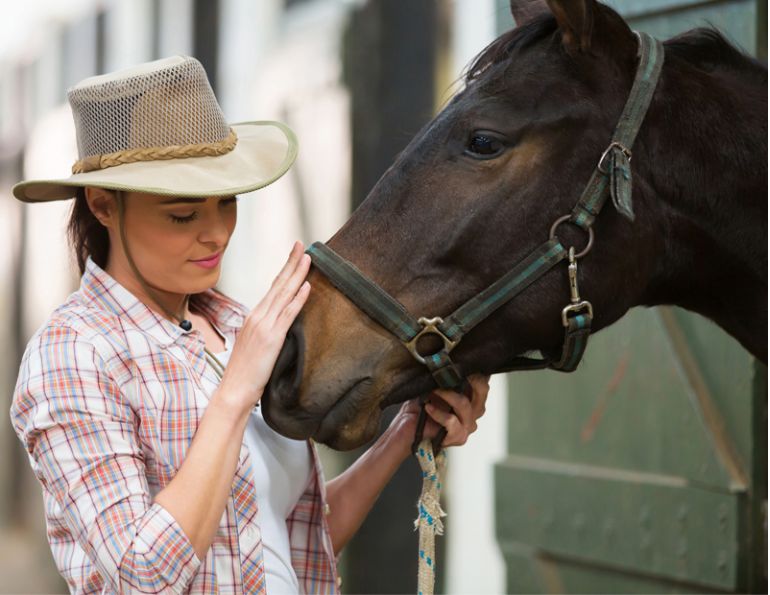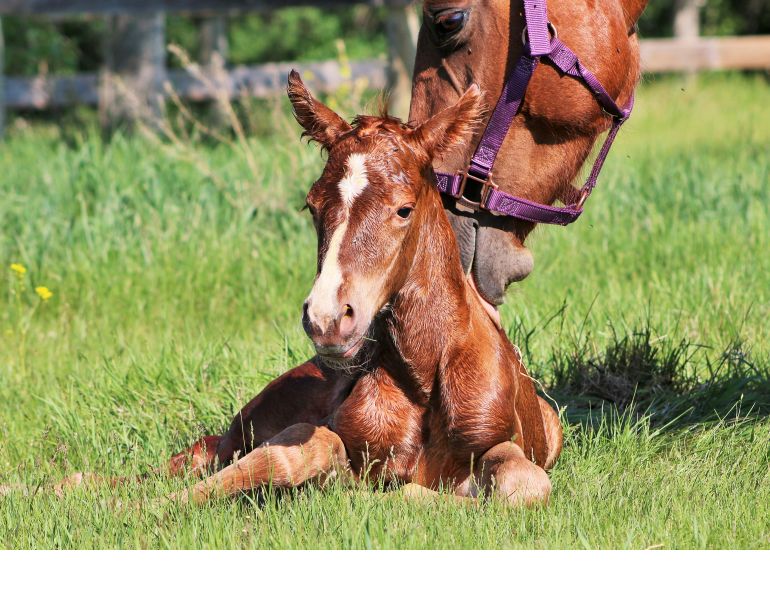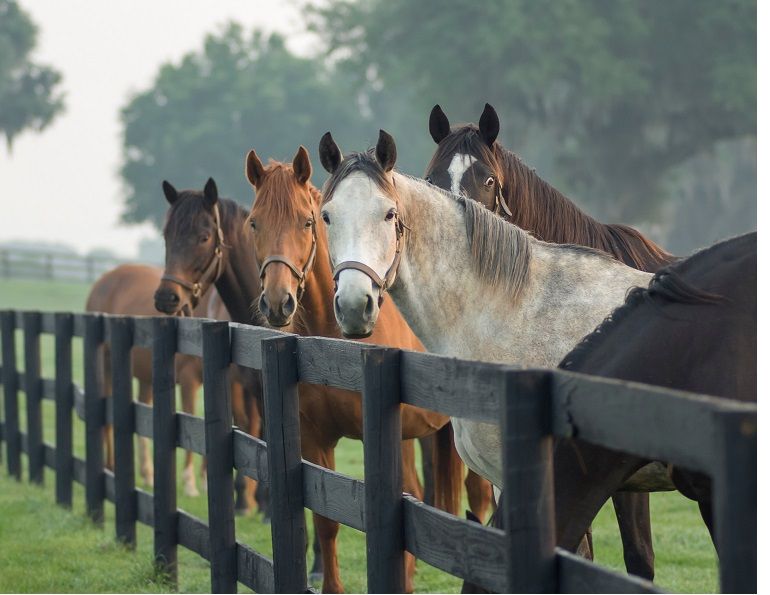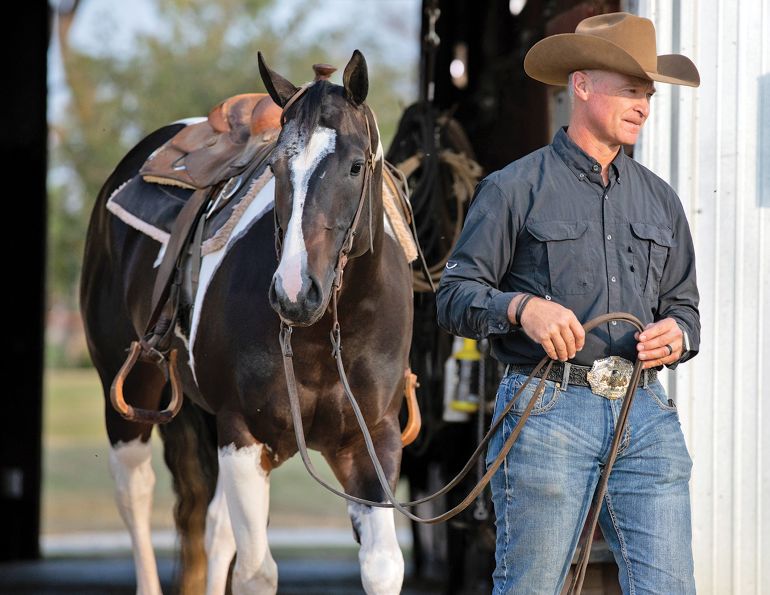By Kentucky Equine Research
There are two groups of horses that are assessed and valued to a large extent on their conformation and presentation — the halter horse and the sales weanling or yearling. “Fat is a pretty colour” is an age old adage, but some sales and halter horses are simply overfed and too fat. To be successful in the modern sales and show arena, the fitter must be able to differentiate fat from fit.
The amount of feed that a foal or weanling can tolerate is extremely dependent upon that individual, and therefore feeding levels must be based on each youngster’s growth rate and degree of fatness.
It may come as a surprise that one would consider the young show horse and the Thoroughbred sales weanling and yearling in the same context. But the horse sale is a horse show and many horses are worth more on sale day than they will be worth during the remainder of their lives. Prepping these horses involves a combination of optimal nutrition, health management, careful exercise, and superior genetics, tempered with hard work and attention to detail.
Preparing a weanling for show or sale is perhaps the biggest challenge of all. A clear understanding of the nutrient requirements of the horse and the critical balance between feed intake and exercise are necessary as they impact condition and soundness.
The weanling feeding program should be based on a balanced ration using palatable, easily assimilated nutrient sources that meet the weanling’s requirements for protein, energy, minerals, and vitamins. Often people fall into the trap of feeding all grain feeds to weanlings, which may encourage fattening but does little to ensure optimal growth and bone development. High protein content in feed does not cause bone problems in young, growing horses. In fact, more cases of acquired flexural deformities and developmental orthopedic disease (DOD) are caused by improper mineral balance and overfeeding energy rich foods than from any other nutritional cause.
The amount of feed that a foal or weanling can tolerate is extremely dependent upon the individual, and it is crucial to adjust feeding levels based on individual performance (growth rate and condition). It is common to feed a weanling that is intended for a futurity or a sale a .45 kg (one pound) of feed per month of age right up until the time of the event.
|
Exercise is an important part of fitting a youngster up for sale or show. For weanlings, free lunging and turnout can be beneficial. |
In general, a 15 to 16 percent protein concentrate should be fed in addition to a fat supplement and good quality clover or alfalfa hay that was harvested in early stages of maturity. A high quality, high energy hay is needed for these horses as it maximizes the utilization of fibrous feeds in meeting the energy requirements and decreases the amount of starch the weanlings process. Also, in using a high quality, early cut hay, the unflattering appearance of gut fill (hay belly) that is often associated with a mature hay of high lignin content can be avoided. Often hay intake is restricted just prior to the show or sale to reduce a potbellied appearance.
In selecting the appropriate concentrate for weanlings, it is important that the total nutrient profile of the feed be considered, not just the protein content. All too often, due to formulation errors on the part of the feed manufacturer or misuse of a feed by the consumer (primarily by cutting a prepared feed with oats), the nutrient/calorie ratio of concentrates fed to weanlings is unbalanced. Horse owners should educate themselves on the nutrient profile of feed designed for a specific class of horses.
Tinkering with a feed can destroy the balance of nutrients. Similarly, feeds formulated for older horses do not satisfy the appropriate macro- and micro-mineral levels to meet the young horse’s energy requirements.
A weanling does not eat as much as an adult horse so higher concentrations of critical nutrients are necessary. Feeds containing heat processed barley and corn are useful because the energy in the grain is much more easily digested and assimilated after steam flaking, micronizing, or extrusion. A feed used for weanlings intended for the sale or show ring should contain added fat from oil, stabilized rice bran, or sunflower seeds. This fat is a concentrated source of energy, helps minimize grain intake, and puts a shine on the coat.
Feeding at least 125 mL (one half cup) of oil daily or a minimum of 500 grams (just over one pound) of stabilized rice bran (or a higher fat supplement), and a biotin, zinc, and methionine coat conditioner for a month before the sale will also improve the condition of the coat. As much as 300 grams (two thirds of a pound) of added fat per day has been fed in some instances when it was critical that more energy be provided without increasing starch (grain) intake. If horses are gradually adjusted to fat intake, a great deal of energy may be fed to the weanling in the form of fat. If a weanling has physitis or other DOD, it is preferable to feed a high fat rather than a high grain diet, but these young horses still need supplementary protein, minerals, and vitamins, which is usually fed in the form of a low intake balancer pellet.
|
|
Beyond the feed bin, the real art involved in fitting weanlings is in the exercise and grooming they receive. Judicious use of free lunging, time spent on a mechanical walker, and hand walking can be very useful tools depending on the individual. Foals run, romp, and play nearly from birth, and a careful program of forced exercise is neither detrimental nor a risk to a weanling. Daily grooming, rinsing with warm water, braiding or banding manes, and conditioning tails are all necessary for weanlings if optimum condition is to be achieved.
With respect to turnout, several factors should be considered as there is a difference between benefit to the sales weanling versus the show weanling. In general, turnout for futurity weanlings works only to a limited extent. If hard feed intake is limited and weanlings are turned out on good pasture, they tend to get a little belly on them. On the other hand, if weanlings are turned out for a little time on good pasture or in barren paddocks, this time out can effectively encourage exercise. Let the individual youngster serve as a guide. Some halter futurity weanlings will tolerate pasture turnout and some will not. For sales weanlings, this appears to be a little less critical as it is more acceptable for sales weanlings to carry both a little hair and a little belly.
Sales and show weanlings should be blanketed as soon as night temperatures drop below 10 degrees C (50 degrees F). In many cases the blanket helps make the hair lie down and helps keep the hair short. One downside of blanketing is that the weanling is often turned out after the sale with no winter coat to withstand the winter chills. It seems that hair growth and shedding for the weanling are somewhat heritable as is hair quality in general. The use of artificial lights may be of value in some programs, and if lights are used, day length should remain a constant 15 hours. One negative aspect of the use of lights for weanlings is that they appear to become refractory to the lights over time (in other words, you can only fool Mother Nature for so long). Some weanlings kept under lights are somewhat challenging to fit as yearlings the next spring.
The last consideration to take into account is weaning time. In general, five months of age is the ideal time to wean. However, it is best to let the individual weanling tell you when to wean. If a weanling is top heavy and too fat, or starts to get upright in the pasterns or show severe physitis, consider weaning as early as three months of age, primarily so nutrient intake can be controlled. A general rule of thumb is to wean a foal at least 45 days before a sale or futurity. If that is too early for late foals, wean five days before a show. Forty five days gives adequate time to get the weanling over the post weaning slump and into good shape, and five days before a show does not give the weanling time to fall apart.
Main Article Photo: Mary R. Vogt - Preparing a weanling for sale or show is a big challenge. The horse sale is a horse show, and many horses are worth more on sale day than they will be worth for the rest of their lives.
This article was featured in the September 2011 issue of Canadian Horse Journal.



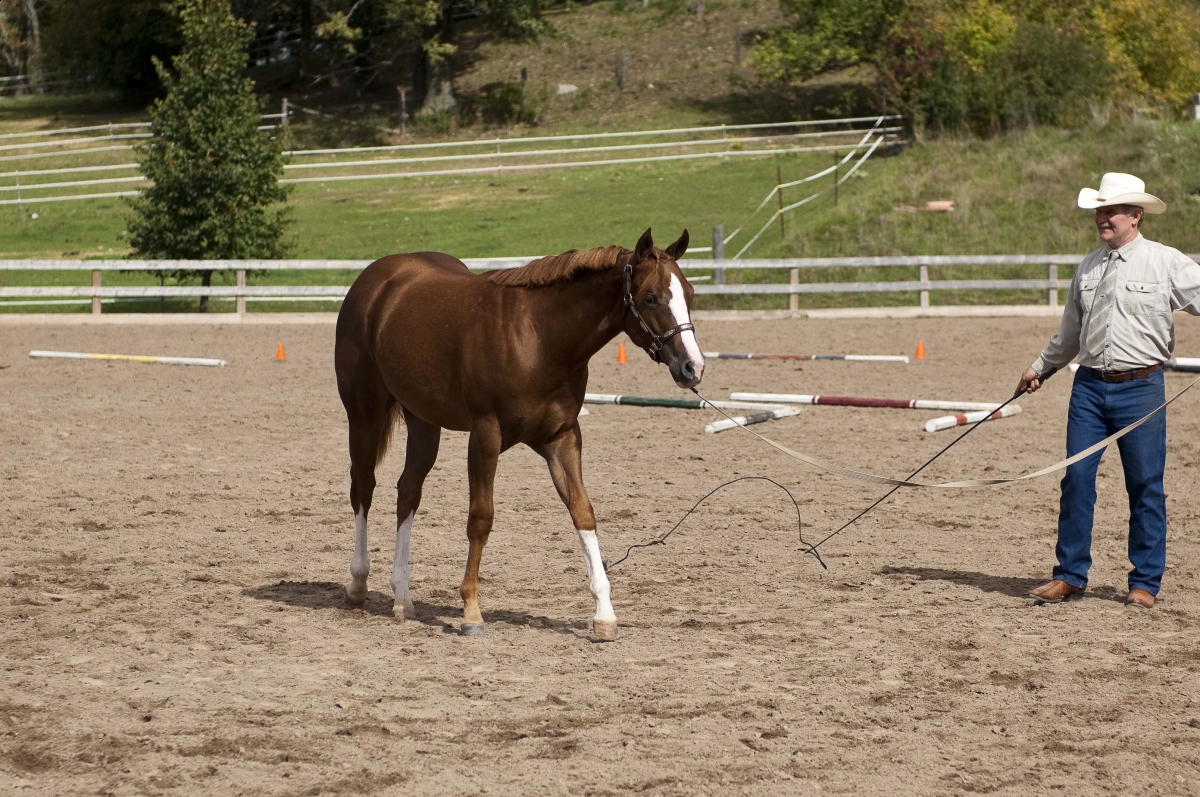 Photo: River Bend Designs
Photo: River Bend Designs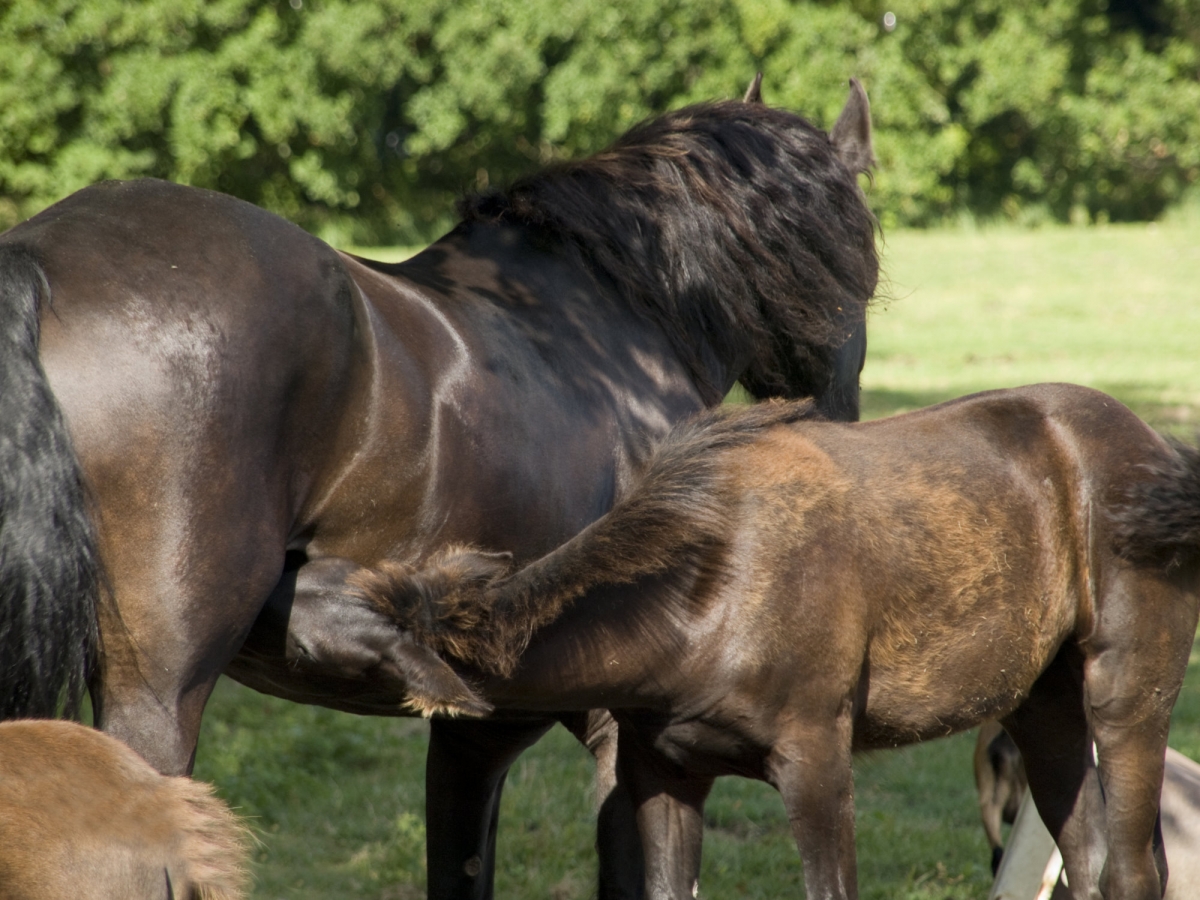 Although five months of age is the ideal time to wean a horse from its dam, it is best to let the individual tell you when he is ready to be weaned.
Although five months of age is the ideal time to wean a horse from its dam, it is best to let the individual tell you when he is ready to be weaned.



